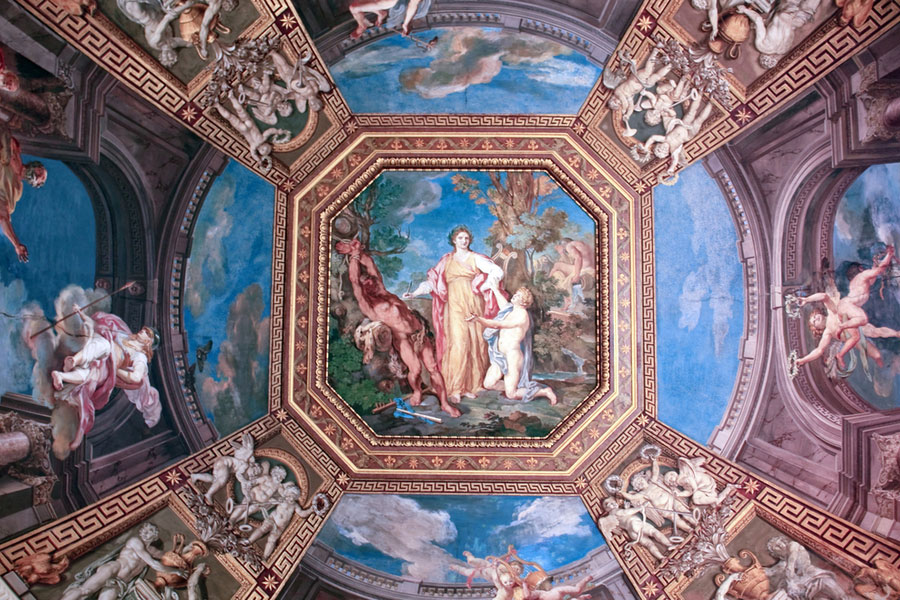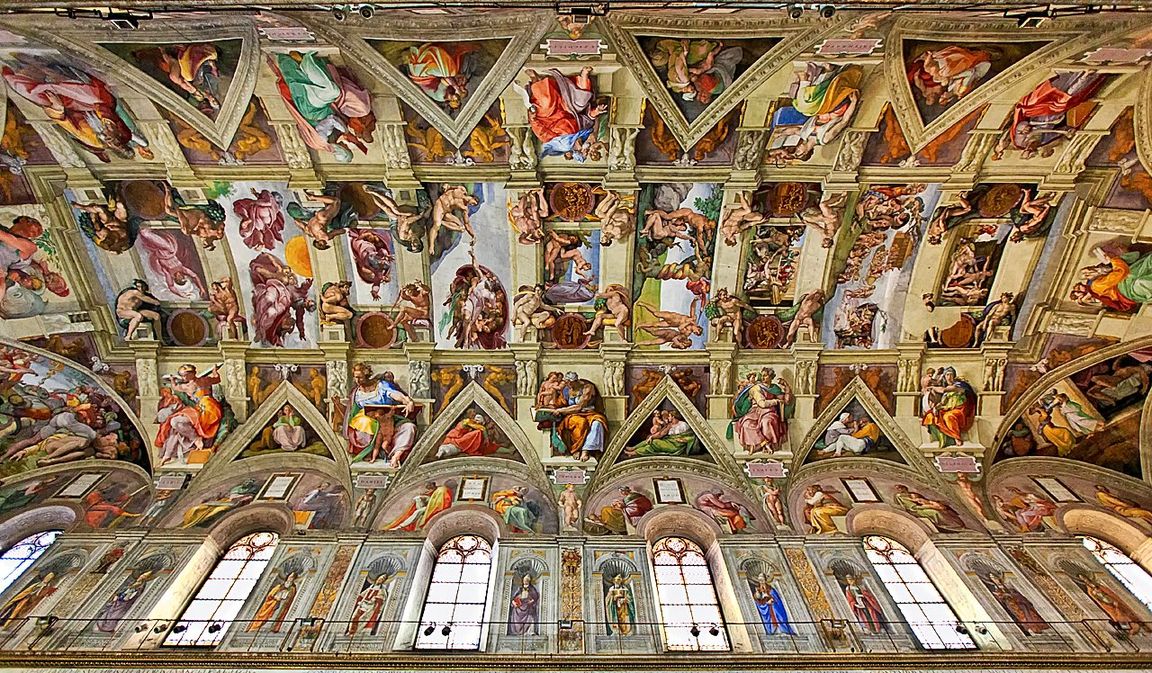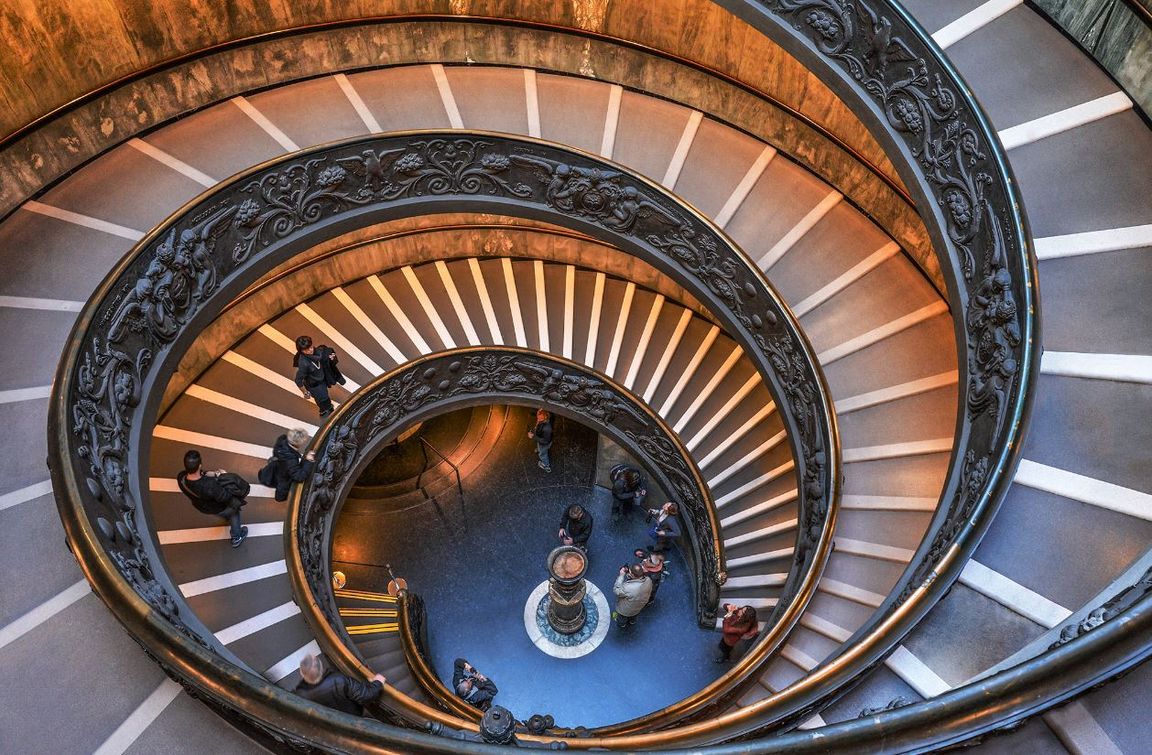It is impossible to imagine visiting Rome without a tour of the Vatican, its museums and Peter’s Basilica. The collection, collected by the popes of Rome are kept here – masterpieces of the great masters of the past, ancient manuscripts, religious and secular collections, a large number of paintings, canvases, sculptures, many works of art.
The Vatican Museums (Musei Vaticani) is a whole complex, located on its territory. The building ranks fifth among the most visited museums in the world and first in Italy.
The history of the emergence of the Vatican Museums - in 1506, Pope Julius II, on the advice of Michelangelo Buonarroti and Giuliano da Sangallo, bought a copy of the marble sculptural composition “Laocoön and his sons” found in the vineyards of the Esquiline Hill and installed a masterpiece for public viewing in one of the niches of the Belvedere. For a wide range of art lovers, they were opened in 1771.

Structure of the Vatican Museums. The complex of museums is located in the interconnected Vatican palaces - the Apostolic, Belvedere, Innocent VII, Nicholas V. There are 54 galleries here. The lower floor is occupied by: the Gregorian Egyptian Museum (9 rooms); the Chiaramonti Museum - a gallery of ancient sculpture from 60 sections; Museum of Pio-Clementino (8 rooms); Borgia apartments (5 rooms); The Sistine Chapel; Christian Museum (Museo Sacro); Pinakothek.
On the upper level are located: the Gregorian Etruscan Museum (18 rooms); galleries of Candelabra, Gobelins; hall of Immacolata - frescoes with allegorical scenes; Raphael's stanzas - 4 rooms painted by Raphael. In the basement there are museums of philately, numismatics and ethnology, and a carriage pavilion.
.jpeg)
The exhibits of the Vatican Museums - there are so many of them that it is impossible to get around and see everything not only in a day, but also in a week. Let us note that the most striking pearls of museums: Bramante Staircase, Pinacoteca, Raphael's painting “Transfiguration”, Pine Cone Courtyard, Rotunda Hall and porphyry bowl, Gobelin Gallery, Michelangelo's fresco “The Last Judgment”, the ceiling of the Sistine Chapel and others.

For instance, the modern Bramante staircase has become one of the most beautiful photographed objects in the Museums, due to its appearance, it is a double helix, with an allegory for the DNA molecule.
Further, the Pinakothek - an art gallery, one of the last additions to the Museums, built in 1931, was founded by Pope Pius VI in 1790. In 18 rooms you can see the works of masters of different eras, from the Middle Ages to the 19th century, about 460 paintings. Their center is the last painting of Raphael “Transfiguration”, painted by him before his death. It depicts the dual human and divine nature of Jesus Christ.
The upper half is light - the serene appearance of Jesus and the prophets Elijah and Moses; the lower one is dark, personifies earthly life with the hard sides of human nature. On the right side, a sick boy is depicted, his parents froze in anticipation of a miracle of his healing, their outstretched hands, as it were, bind the top and bottom of the picture.
The Courtyard of the Pine Cone is named after an almost 4-meter high cone, installed on a site near the Belvedere Palace. The giant cone was created in the 1st century BC. and cast in bronze. It is framed by two peacocks, also made of bronze.

The Rotunda Hall makes a special impression on visitors to the Museums because of the dome of the room, modeled on the Pantheon; an elegant tiny mosaic on the floor dating back to the 2nd century and a 12-meter porphyry bowl created from chilled lava, so it is also incredibly heavy.
Gallery of Tapestries - amazes tourists with painted plaster bas-reliefs located on the ceiling. The tapestries on the walls took years to make. The best weavers from Flanders and Belgium wove them from wool, silk, gold and silver threads.

Do you know what is the most amazing feature of the “Resurrection of Jesus” tapestry? As you approach, look carefully into his eyes, keep walking and follow his eyes, even when you have already gone through the entire tapestry, he will still look at you. This is a wonderful example of “moving perspective” - a technique that you can also see in the painting “Mona Lisa” by Leonardo da Vinci.
In the famous Sistine Chapel, you will find amazing frescoes, paintings by Renaissance artists - Sandro Botticelli, Domenico Ghirlandaio, Cosimo Russell.

It is impossible to tear yourself away from the large-scale fresco “The Last Judgment” by Michelangelo, who created it in 4 years. The entire altar wall is occupied by a composition depicting Christ, the Virgin Mary, flying angels, the angels of the Apocalypse, bringing the righteous into paradise and the fall of sinners into hell.
Inside the Sistine Chapel, conversations are strictly prohibited, so before entering the hall, the guides describe to tourists everything that they have to see.
Interesting facts about the Vatican Museums:
- To see and explore all the museums, it is better to plan visits every time you come to Rome, allocating 3-4 hours for viewing.
- On the last Sunday of the month and September 27, World Tourism Day, the Vatican Museums can be visited for free.
- An audio guide is sold at the entrance to the museums. It contains about 200 audio recordings of various exhibits.
- A virtual tour of the exhibition halls can be made completely free of charge on the official website of the Vatican Museums.
- The routes through the halls of the galleries are designed taking into account one-way traffic.
- The Vatican Museums have souvenir and bookstores, several cafes, the Vatican Post office, which sells postcards and attributes of the papal state.
Resources: italy-insider.ru; www.tourister.ru; italyme.ru.
Also read:


